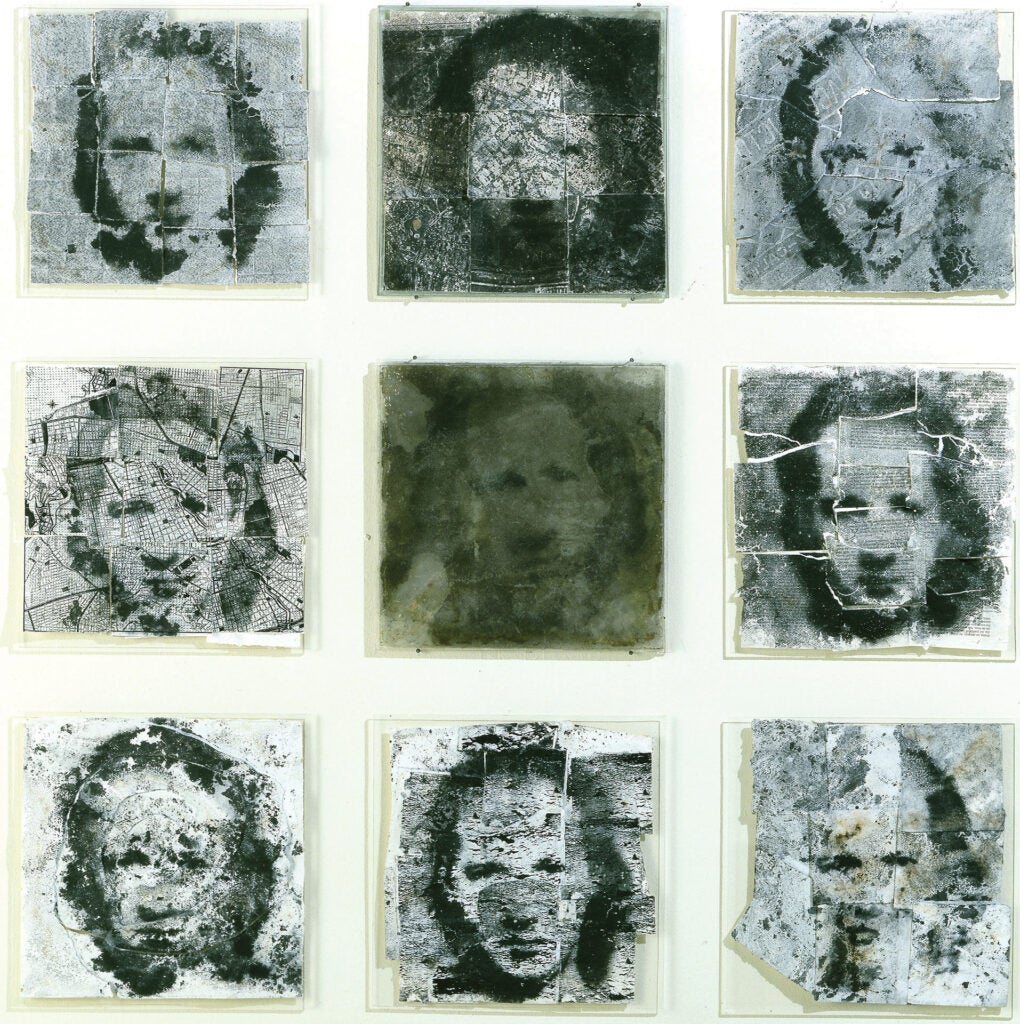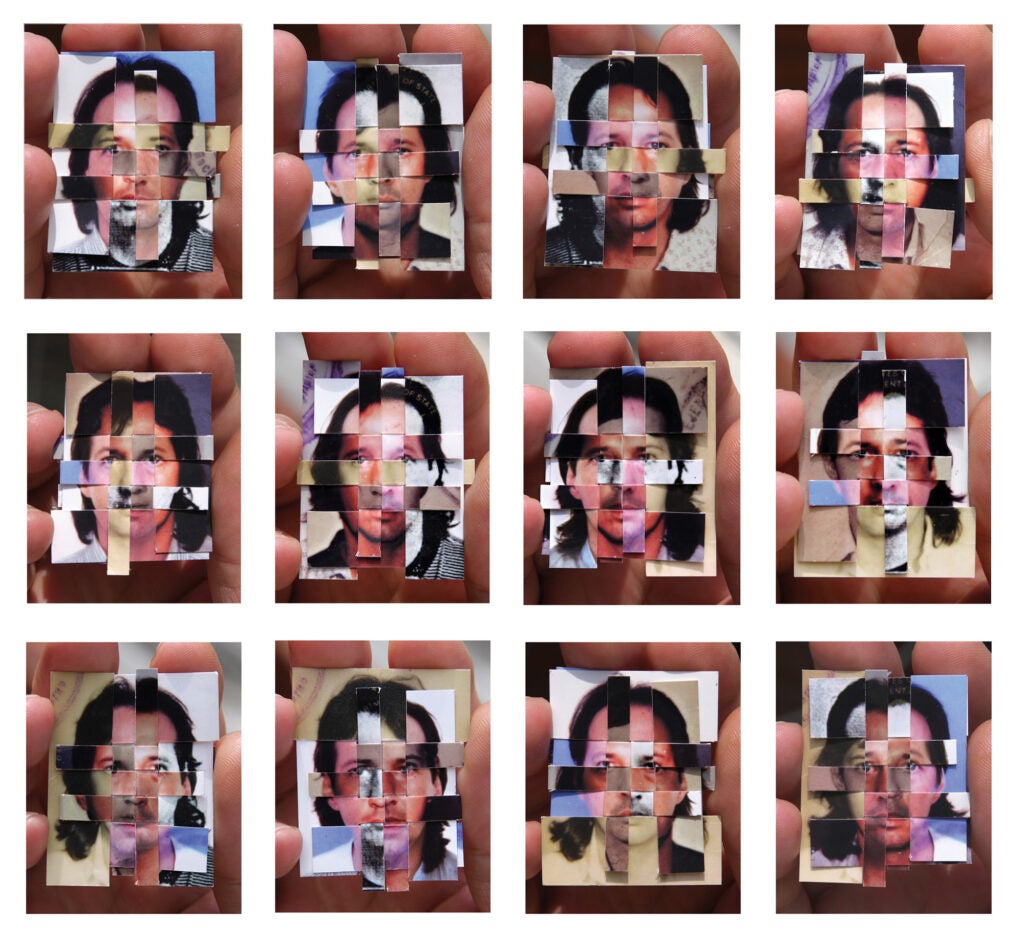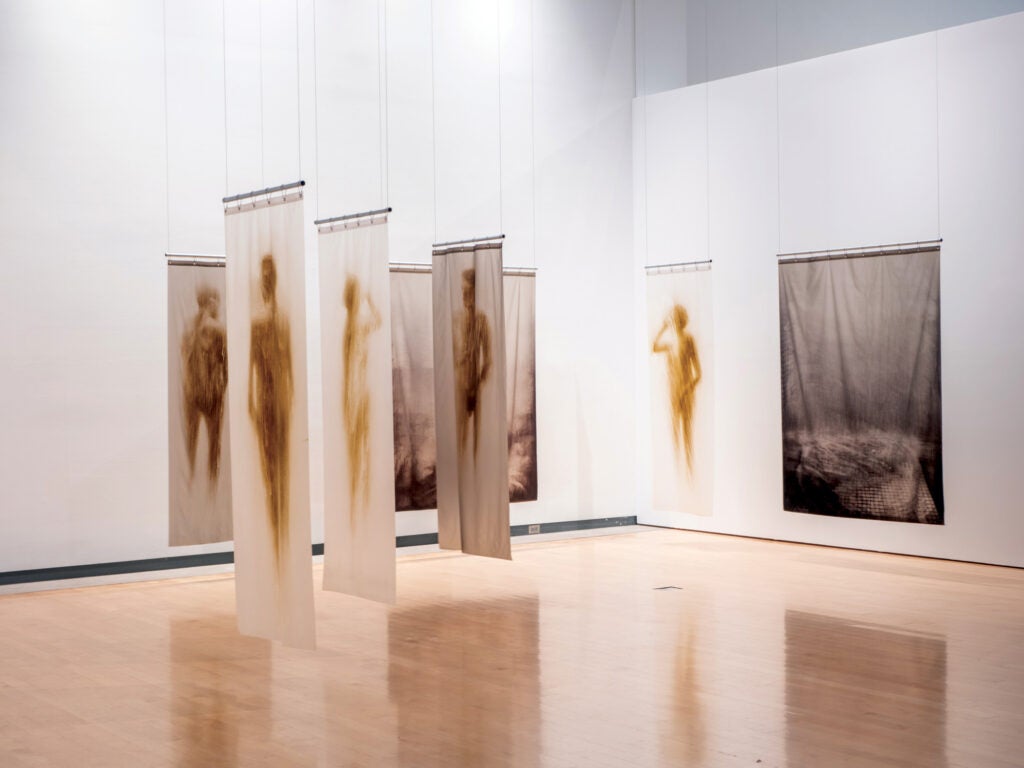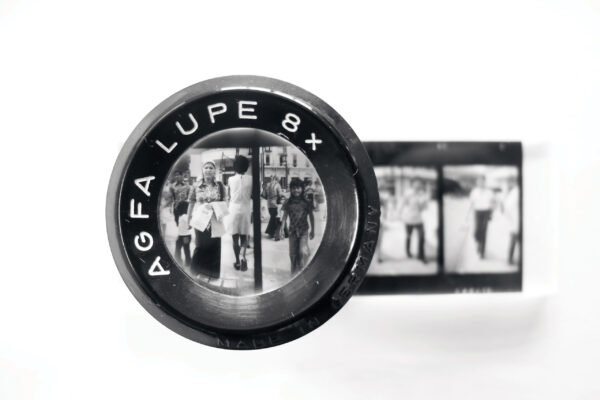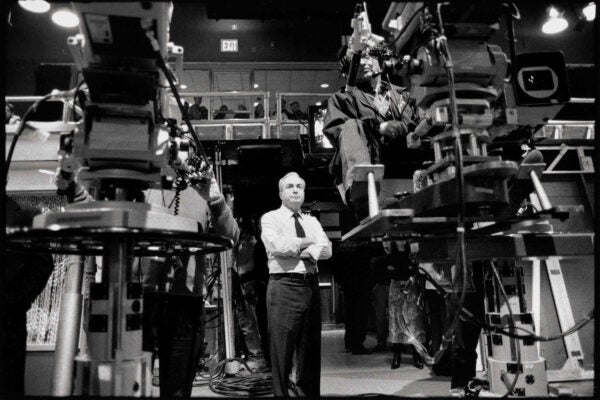Memory, history and our perception of images combine in “Oscar Muñoz: Invisibilia,” on display at the Blanton Museum of Art through June 5.
The exhibition showcases about 40 works from the contemporary Colombian artist, who studied drawing in art school but has become known for his experimentation with photography.
“Muñoz learned about photography on his own and deconstructed the medium independently, and that independent exploration led to a lot of trial and error with the very mechanics of photography,” says Vanessa Davidson, curator of Latin American art for the Blanton.
His works often combine photographic processes with drawing, painting, printmaking, video or sculpture. Many are plays on the idea of a photographic portrait, using his own face or photos taken from newspapers of people who died in Colombia’s civil war. A chronology on the Blanton’s website, written by Florencia Bazzano, the assistant curator of Latin American art, gives context to how historical events in Colombia, artistic and cultural developments, and Muñoz’s life intertwined.
“A lot of his work is about memory. It’s about social amnesia,” Davidson says. “He tends to work with the relationship between, on the one hand the precariousness of life, and on the other hand, the fragility of the image itself. And that is something that is very compelling today when we think about the pandemic and the kind of loss that we’re facing as a country and as a world.”
The exhibition is the first retrospective of Muñoz’s work in the United States. It’s fitting, then, that it’s on display at the Blanton, which was the first museum in the country to establish a curatorial position and department for Latin American art in the late 1980s, Davidson says.
“Oscar Muñoz: Invisibilia” is an experience that calls for contemplation and many second looks.
“It’s a gripping exhibition,” Davidson says. “It’s a moving exhibition. And it’s one that really shouldn’t be missed.”
